
Baltimore Recorders.org
About the Udu
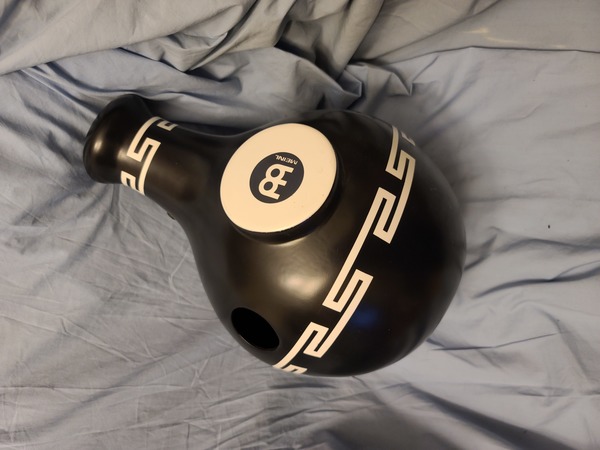
The udu is a percussion instrument of the Igbo people of south and south eastern Nigeria. They were originally made from clay, and served as pots for holding water or food. (The term udu means vessel in the Igbo language.) Traditionally the pots are roughly spherical in shape. Their diameter varies, but typical instruments are just under a foot across. The neck of the pot is rather small, sometimes only two inches tall, with an opening of an inch in diameter. In addition to the opening at the top of the pot, a small circular hole approximately an inch in diameter is made on the upper side of the pot. By slapping one of the holes with the palm of the hand, the udu produces a low bass sound. This sound can be modulated by partially covering the other hole in the pot.
The places where the clay was collected to make the udu were sacred to the Igbo. They believed if a man went there he would become impotent. Thus, the creation of the udo was a female endeavor. This also extended to its use as an instrument. They were used exclusively by women as part of ceremonies, such as weddings, or dances. Other instruments, such as gugwa horns and zunzum/ahwuo zithers, were exclusively male. It should also be noted that all women were allowed to play the udu, there is no special class of musician, or people designated to play the instrument.
Udu are made from a mixture of clay and sand. They are created using the exterior of an existing pot as a form. A slab of clay is laid over the old pot and hammered onto the form with wooden paddles, and smoothed by hand. The newly formed bottom half is then removed from the old pot. The upper potion of the udu is created by taking strips of clay and attaching them by hand to the upper rim of the udu. The woman works her way around the edge of the pot in a spiral fashion. After adding a few inches of length to the height of the pot, the interior is smoothed by hand, and the exterior is smoothed with a stick. More clay is then added until the pot is fully formed. The edge of the top of the pot is evened out and smoothed with a leaf held between the fingers. The work continues by adding texture to the exterior of the pot with a stick that is rolled along the surface of the pot. Additional patterns are added with specialized wooden tools or pieces of straw. Lastly, an additional hole is cut with a wooden stick in the side of the pot. When the pot is complete it is left to dry. The next day it is fired in an outdoor area. A rectangular area is constructed with small piles of rocks in the four corners. These piles are roughly one foot tall. The pots are placed within the rectangle, filling the area. Large logs, approximately six feet in length and with a diameter of more than eight inches, are placed on top of the rocks, forming a fence like boundary. More pots are placed in the rectangle, piled on top of one another. Sticks and kindling are then shoved underneath the logs and into the rectangle. Green leaves are also added as well. Some kindling and green leaves are also placed on top of the pots as well. The kindling is lit. Then next day the pots are removed from the fire with long sticks. They are still burning hot, as when dry grasses contact them, they light on fire. Glazes are not used in traditional udu making.
Other groups of people in Nigeria have other names for the udu. The Ibibio call it the abang mbre, meaning pot for playing, or simply abang. The Yaruba call it the ikoko-ilu, meaning container drum. There are also instruments that are related to the udu, both musically and geographically. One of which is the kimkim (sometimes called kimkin or akimkim) It is used by the Attakar, Gabagyi (Gwari / Gbari), Kagoro, and Moruwa all of Kaduna state in central Nigeria, and the Wurkun (Kulu) of east-central Nigeria.
The kimkim is a dumbbell shaped hollow clay instrument with holes at both ends. Unlike the udu, it is not fired and is grayish beige in color. The upper part of the body is approximately 4 inches in diameter. The body of the instrument narrows to just under 2 inches at the waist. The lower part of the body is roughly 6 inches in diameter. The thickness of the wall of the upper body is 1/4 inch, whereas the thickness of the lower body is 3/8 inch. The openings are 1 1/2 inches in diameter.
The instrument is played while seated. The bottom opening is placed against the thigh. One hand holds the waist of the instrument while the other is used to slap the upper opening with the palm.
Attakar distinguish between two types of kimkim: ones with a small voice (go tway bachinchong) and those with a large voice (go tway). Typically both types are used together. Two or more women will play instruments with small voices and two or three will play ones with a large voice. Increasingly they use udu for large voice instruments, but still refer to it as a kimkim.
Like the udu, kimkim are played by women. There are various social functions in which they are played. The most common are dances, in which young people socialize. In this setting a variety of instruments and voices are used. Kimkim are used at weddings in playing kuku music. This music is sung by adult women and is accompanied solely by the kimkim. The function of the music was to instill in a young woman the social responsibilities now that she is married. The songs recount the history of the people, or of an important man. Kimkim are also used to accompany songs of ridicule which chide people who do not obey the social mores. Conflicts between the sexes are another subject of these songs.
The kimkim also has religious significance. The Gwari believe that the kimkim are a medium for spirits. During rituals the voices of their ancestors are thought to speak through the sound of the instrument.
Shown here is a modern Westernized udu, with a pear shaped body. It can be sounded in many different ways. There are two surfaces that are designed to act as drum heads, one on the bottom of the drum and one on the side. They are white in color. The large head produces a low sound, and the small one a higher pitched sound. Sounds can also be made by slapping the two open holes in the drum. This produces a low popping sound. By partially covering the side hole it is possible to change the pitch of the drum. The sides of the drum are also used to produce sound. Hitting them with the tips or sides of your fingers, or slapping them with your palm produces a high pitched tone. Other sounds can be made by rubbing the drum. Water is sometimes added to udu drums to change their pitch. It is an exceptionally expressive instrument.
Some modern udu have large holes in their bodies in which drum heads made of animal skin or synthetic materials are attached. Thus they are truly drums, struck membranophones, instruments in which a stretched membrane primarily produces the sound. However, traditional instruments are more properly classified as struck and friction idiophones, in which the vibration of the body of the body of the instrument produces the sound, or as plosive aerophones in which the sound is made by a body of air vibrating.
The udu pictured here is made by Meinl. It is constructed from fiberglass to withstand the rigors of being played by kids. I have found it to be ideal for that audience, as it is quieter than most drums, so when a youngster bangs on it, it is not too loud.
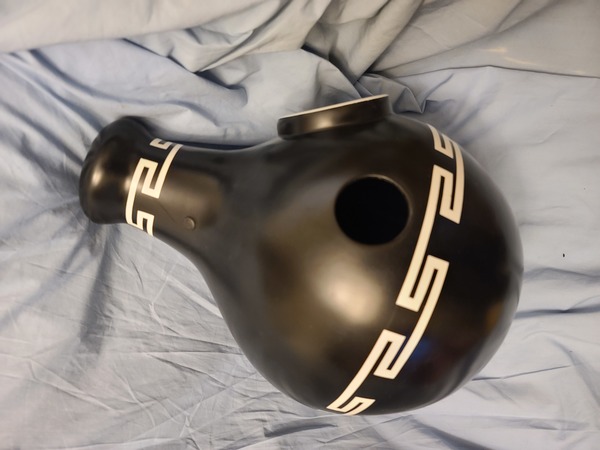
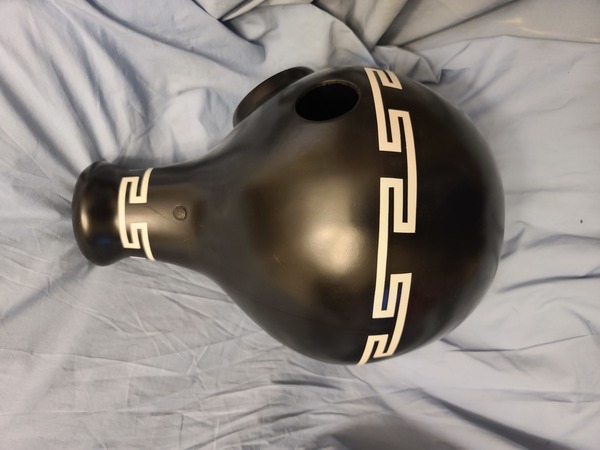
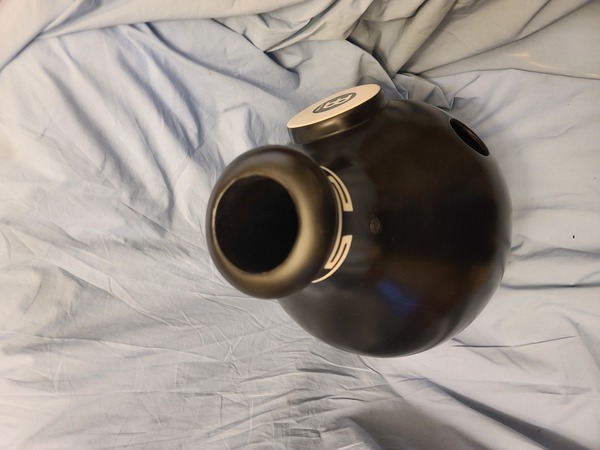
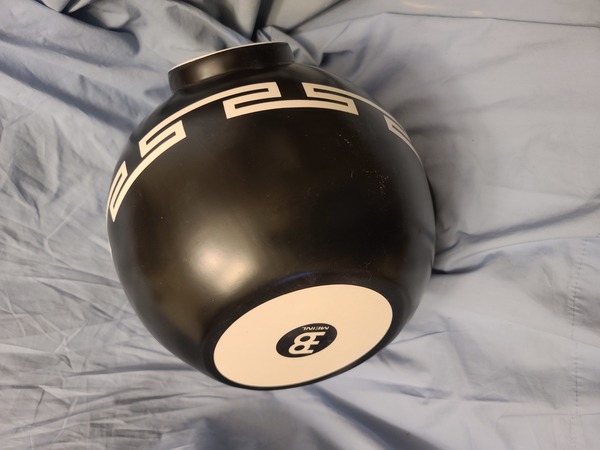
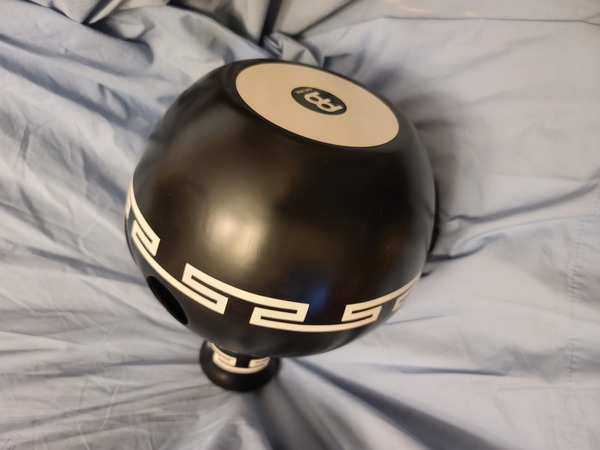
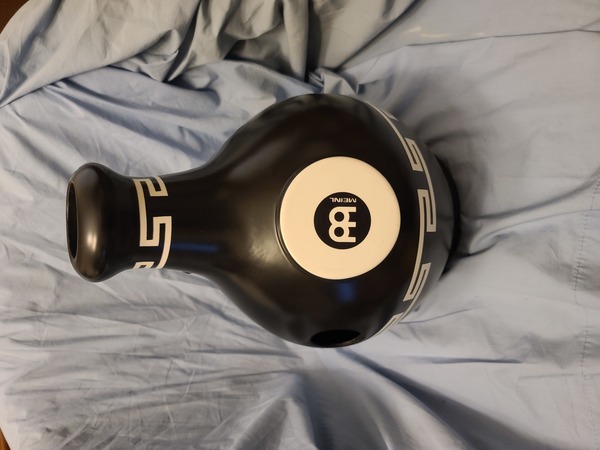
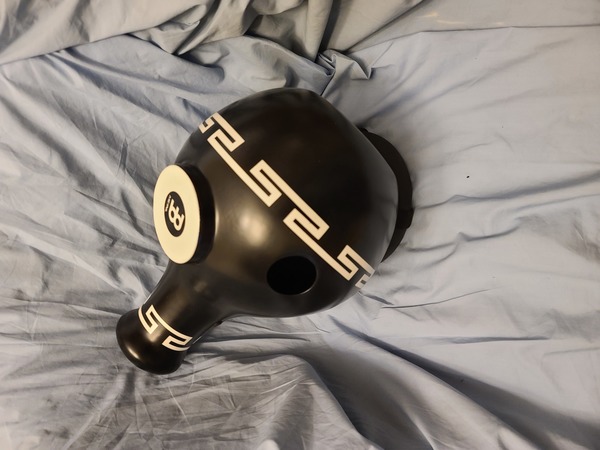
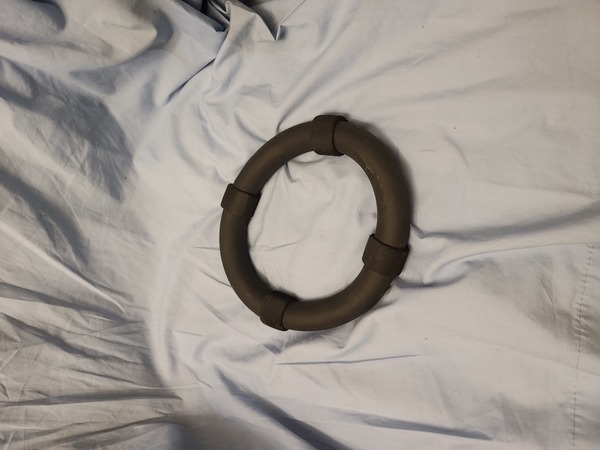
Web design copyright 2015 Michael Berger